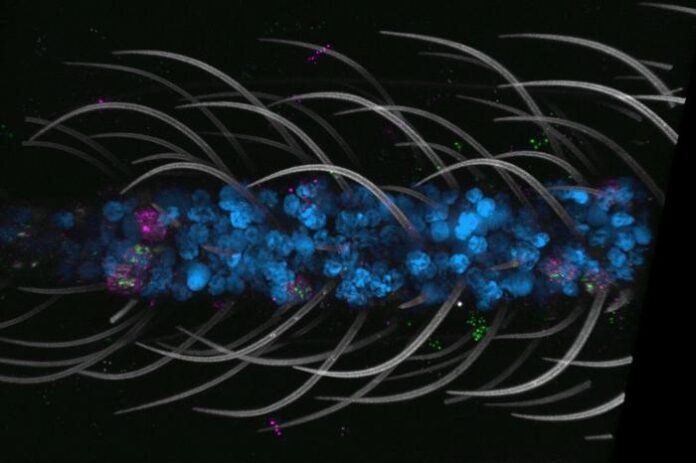The first comprehensive cellular atlas of the Aedes aegypti mosquito has been unveiled, offering unprecedented insights into the gene expression of this species, which is responsible for transmitting more diseases than any other mosquito. Published in the journal Cell in March 2024, the study titled “A single-nucleus transcriptomic atlas of the adult Aedes aegypti mosquito” provides a detailed view of how genes operate across various mosquito tissues, from their antennae to their legs.
Led by Leslie Vosshall, PhD, a professor at The Rockefeller University and vice president and chief scientific officer at the Howard Hughes Medical Institute, the research team aimed to create an inclusive resource that includes both male and female mosquitoes. Vosshall emphasized the significance of this work, stating, “This is a comprehensive snapshot of what every cell in the mosquito is doing as far as expressing genes.”
Filling the Gaps in Mosquito Research
Traditionally, studies on mosquito biology have predominantly focused on female specimens due to their role in disease transmission. “There is an enormous bias toward looking at the biology of the female and very little information about the male,” Vosshall explained. This new atlas seeks to rectify that imbalance, providing insights into previously overlooked aspects of male mosquito biology.
The research revealed novel cell types and enhanced understanding of sensory neuron organization, particularly regarding chemoreceptors across all sensory tissues. Remarkably, the study highlighted both differences and unexpected similarities in gene expression between male and female mosquitoes. For instance, after a blood meal, the female mosquito’s brain undergoes significant changes in genetic expression.
The research team utilized single-nucleus RNA sequencing (snRNA-seq) to compile a dataset of over 367,000 nuclei from 19 types of mosquito tissues, categorized into five biological themes: major body segments, sensation and host seeking, viral infection, reproduction, and the central nervous system. The findings identified 69 cell types grouped into 14 major cell categories, many of which had not been previously documented.
Unveiling Behavioral Shifts Post-Blood Feeding
One striking discovery involved the changes in behavior after a female mosquito has fed. Following a blood meal, a female mosquito shifts her focus from seeking hosts to developing and laying eggs. Vosshall posed a critical question: “How does this incredibly strong drive to bite people get turned off?”
To investigate this, the team analyzed gene expression in female mosquito brains at 3, 12, 24, and 48 hours post-feeding. They observed changes in gene expression during all time periods, with significant upregulation peaking shortly after feeding and gradually decreasing over time. Interestingly, while neurons make up roughly 90% of mosquito brain cells, it was the glial cells—support cells that constitute less than 10%—that exhibited the most substantial shifts in gene expression.
Vosshall noted, “The glia are completely rewired during this time when the females lose interest in people.” Furthermore, while the cellular makeup of male and female mosquitoes is largely similar, the research identified specific clusters of sex-specific cells, particularly in the male antenna, which remains largely unexplored.
“This is a global resource that has been open to everyone since the very inception of the project in 2021, so many people are already using it,” Vosshall remarked. The dataset is freely accessible to researchers worldwide, fostering future discoveries that could enhance our understanding of mosquito biology and disease transmission.







